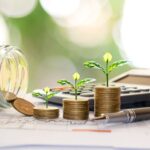In the fast-paced world of finance, understanding the Quick Ratio is vital for investors and businesses. Often referred to as the ‘Acid-Test Ratio,’ this metric offers insights into a company’s ability to meet short-term obligations. Whether you’re a seasoned investor or a budding entrepreneur, the Quick Ratio is a crucial tool in your financial arsenal.
What Is the Quick Ratio?
The Quick Ratio, also known as the Acid-Test Ratio, is a financial metric used to assess a company’s short-term liquidity and its ability to cover its immediate financial obligations without relying on the sale of inventory. It is a more stringent measure of a company’s liquidity compared to the more commonly used Current Ratio.
Unlike the Current Ratio, which includes all current assets, the Quick Ratio excludes inventory and prepaid expenses, as these may not be easily converted into cash.
How to Calculate Quick Ratio?
The Quick Ratio is calculated as follows:
Quick Ratio = (Cash and Equivalents + Marketable Securities + Accounts Receivable) / Current Liabilities
Here’s a breakdown of the components in the formula:
- Cash and Equivalents – Includes cash on hand, bank balances, and short-term liquid investments.
- Marketable Securities – Short-term investments that can be quickly sold for cash, such as Treasury bills.
- Accounts Receivable – Money owed by customers that the company expects to collect soon.
- Current Liabilities – All short-term financial obligations due within a year, including accounts payable, short-term debt, and other accrued expenses.

Example Calculation of Quick Ratio
Consider a company, ABC Corp., with the following financials:
- Cash & Equivalents: $50,000
- Marketable Securities: $30,000
- Accounts Receivable: $70,000
- Inventory: $80,000 (excluded from Quick Ratio)
- Current Liabilities: $100,000
Quick Ratio = (50,000 + 30,000 + 70,000) / 100,000
Quick Ratio = 150,000 / 100,000 = 1.5
A Quick Ratio of 1.5 means that ABC Corp. has $1.50 in liquid assets for every $1 of current liabilities, indicating a strong liquidity position.
Why is Quick Ratio Important?
The Quick Ratio is a vital financial indicator for assessing a company’s short-term financial health. Here’s why it matters:
1. Financial Health Assessment
The Quick Ratio provides a snapshot of a company’s financial health. It indicates if a business can meet its current obligations without experiencing financial strain. For investors, this is invaluable information when considering a potential investment.
2. Immediate Debt Repayment
Unlike the Current Ratio, which includes inventory in the calculation, the Quick Ratio excludes this less liquid asset. By focusing on more liquid assets, the Quick Ratio emphasizes a company’s ability to pay off its debts quickly, which can be especially critical during economic downturns or unexpected financial hardships.
3. Creditor and Supplier Confidence
Suppliers and creditors often use the Quick Ratio to assess whether a business can meet its financial commitments promptly. A high Quick Ratio suggests that a company is less likely to default on payments, which can build trust and lead to favorable credit terms.
4. Essential for Crisis Management
In economic downturns or business slowdowns, a high Quick Ratio acts as a financial cushion, allowing companies to navigate challenging periods without liquidity issues.
How to Interpret Quick Ratio
Interpreting the Quick Ratio requires understanding industry standards, business cycles, and financial strategies.
- Quick Ratio > 1 → Strong liquidity position, as liquid assets exceed liabilities.
- Quick Ratio = 1 → Adequate liquidity, with just enough liquid assets to cover short-term liabilities.
- Quick Ratio < 1 → Liquidity concerns, as the company may struggle to meet obligations without selling inventory or seeking external funds.
Industry-Specific Considerations
- Retail and Manufacturing: Typically have lower Quick Ratios since inventory forms a significant portion of current assets.
- Technology and Services: Often have higher Quick Ratios due to cash-heavy business models and minimal reliance on inventory.
- Banking and Financial Services: Maintain high liquidity, resulting in higher Quick Ratios as a safeguard against financial instability.
What Is a Good Quick Ratio?
A “good” Quick Ratio depends on the industry and business model. However, general benchmarks include:
- Greater than 1.0 – Indicates a strong liquidity position.
- Between 0.7 and 1.0 – Suggests moderate liquidity but may require close monitoring.
- Less than 0.7 – Signals potential liquidity problems, especially if liabilities significantly exceed liquid assets.
Industry Benchmarks:
- Tech & Services: 1.5 to 2.5 (High liquidity)
- Retail & Manufacturing: 0.5 to 1.0 (Lower due to reliance on inventory)
- Financial Services: 2.0+ (High liquidity required for stability)
A Quick Ratio between 1.2 and 2.0 is generally considered healthy, ensuring enough liquidity without excessive idle cash.
Quick Ratio vs. Current Ratio
The Quick Ratio and the Current Ratio are two essential metrics for evaluating a company’s financial health and liquidity. While they share the same objective of assessing a company’s ability to meet its short-term obligations, they do so in slightly different ways. Understanding the distinctions between these two ratios is vital for a comprehensive financial analysis.
What are the Limitations of Quick Ratio?
Despite its usefulness, the Quick Ratio has certain limitations:
1. Ignores Business Cash Flow
While it provides a snapshot of liquidity, the Quick Ratio does not reflect the company’s ability to generate cash flow over time.
2. Excludes Inventory, Even if Easily Sellable
For businesses where inventory turnover is high (e.g., supermarkets), excluding inventory understates liquidity strength.
3. Assumes All Accounts Receivable Are Collectible
Some receivables may not be recoverable, overstating the company’s liquidity position.
4. Industry Differences Make Comparisons Difficult
A “good” Quick Ratio varies significantly by industry, making cross-sector comparisons less meaningful.
5. Does Not Consider Financial Leverage
A high Quick Ratio does not necessarily mean financial strength if the company has excessive long-term debt.
How to Find Quick Ratio?
InvestingPro offers detailed insights into companies’ Quick Ratio including sector benchmarks and competitor analysis.

InvestingPro+: Access Quick Ratio Data Instantly
Unlock Premium Data With InvestingPro 📈💸
Gain instant access to Quick Ratio data within the InvestingPro platform. Plus:
✓ Access to 1,200+ additional fundamental metrics
✓ Competitor comparison tools
✓ Evaluate stocks with 14+ proven financial models
Quick Ratio FAQs
How does the Quick Ratio differ from the Current Ratio?
The Quick Ratio excludes inventory, focusing on more liquid assets. The Current Ratio includes inventory and is a broader measure of liquidity.
Why is the Quick Ratio also called the ‘Acid-Test Ratio’?
It’s referred to as the ‘Acid-Test Ratio’ because it tests a company’s ability to meet its immediate financial “acidic” obligations.
Can a company have a Quick Ratio above 2?
Yes. A Quick Ratio above 2 may indicate excess liquidity, which could mean inefficient capital allocation.
Is a high Quick Ratio always good?
While a high Quick Ratio indicates strong liquidity, it may also suggest that the company is not efficiently using its assets. It’s essential to consider industry norms and the company’s specific circumstances.
How often should companies monitor Quick Ratio?
Most businesses track their Quick Ratio quarterly to ensure liquidity remains within acceptable limits. Highly leveraged firms may monitor it more frequently.









